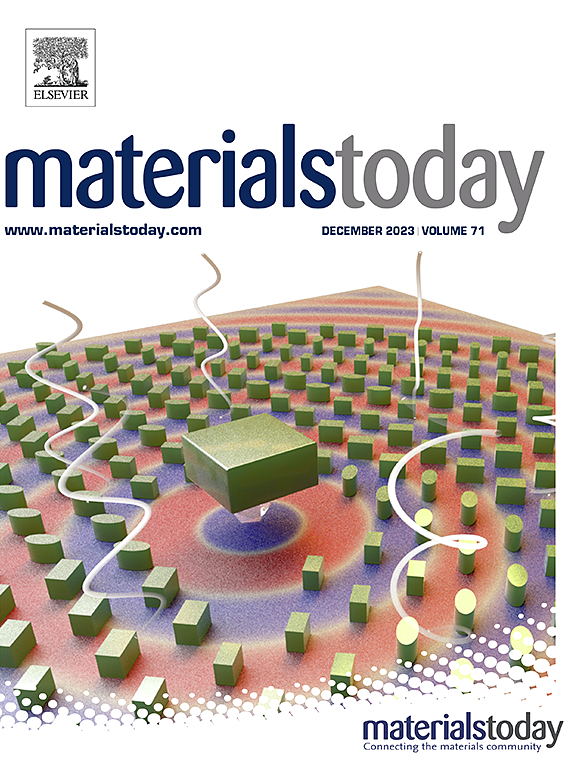Photonic structures in multispectral camouflage: From static to dynamic technologies
IF 21.1
1区 材料科学
Q1 MATERIALS SCIENCE, MULTIDISCIPLINARY
引用次数: 0
Abstract
Ubiquitous camouflage phenomena in natural inspire and promote the development of modern camouflage technologies. Currently, the combination of detectors working across different wavebands has posed severe threats to camouflage technologies working within single/narrow wavebands, creating an urgent demand for advanced multispectral camouflage technologies. However, due to distinct or even incompatible requirements of thermal properties at different wavelengths, achieving multispectral camouflage via the same structure still remains tremendously challenging. Benefiting from the micro/nanomanufacturing technologies, various photonic structures that enable precise manipulation of electromagnetic waves emerge, and they have been successfully applied to multispectral camouflage. In contrast, a systematic review of photonic engineered structures in multispectral camouflage technologies is still lacking. Herein, we present the state-of-the-art review of advanced photonic structures in multispectral camouflage technologies. This review commences with the elucidation of spectral detection principles and corresponding requirements for multispectral camouflage, summarizes exceptional photonic structures for static infrared compatible multi-band camouflage application, continuous with innovative photonic structures integrated with dynamically reconfigurable materials for adaptive multispectral camouflage, and ultimately ends with challenges and perspectives for the future development of photonic structures in multispectral camouflage technologies. This review can serve as guidance for designing and applying photonic structures in multispectral camouflage technologies.

多光谱伪装中的光子结构:从静态到动态技术
自然界中无处不在的伪装现象激发和促进了现代伪装技术的发展。目前,在不同波段工作的探测器组合对在单/窄波段工作的伪装技术构成了严重威胁,对先进的多光谱伪装技术产生了迫切需求。然而,由于不同波长对热性能的不同甚至不相容的要求,通过相同的结构实现多光谱伪装仍然是一个巨大的挑战。得益于微纳米制造技术,各种能够精确操纵电磁波的光子结构应运而生,并已成功应用于多光谱伪装。相比之下,多光谱伪装技术中光子工程结构的系统综述仍然缺乏。在此,我们介绍了多光谱伪装技术中先进光子结构的最新进展。本文首先阐述了多光谱伪装的光谱探测原理和相应要求,总结了静态红外兼容多波段伪装应用的特殊光子结构,接着介绍了自适应多光谱伪装应用中与动态可重构材料集成的创新光子结构。最后对多光谱伪装技术中光子结构的发展提出了挑战和展望。对多光谱伪装技术中光子结构的设计和应用具有一定的指导意义。
本文章由计算机程序翻译,如有差异,请以英文原文为准。
求助全文
约1分钟内获得全文
求助全文
来源期刊

Materials Today
工程技术-材料科学:综合
CiteScore
36.30
自引率
1.20%
发文量
237
审稿时长
23 days
期刊介绍:
Materials Today is the leading journal in the Materials Today family, focusing on the latest and most impactful work in the materials science community. With a reputation for excellence in news and reviews, the journal has now expanded its coverage to include original research and aims to be at the forefront of the field.
We welcome comprehensive articles, short communications, and review articles from established leaders in the rapidly evolving fields of materials science and related disciplines. We strive to provide authors with rigorous peer review, fast publication, and maximum exposure for their work. While we only accept the most significant manuscripts, our speedy evaluation process ensures that there are no unnecessary publication delays.
 求助内容:
求助内容: 应助结果提醒方式:
应助结果提醒方式:


